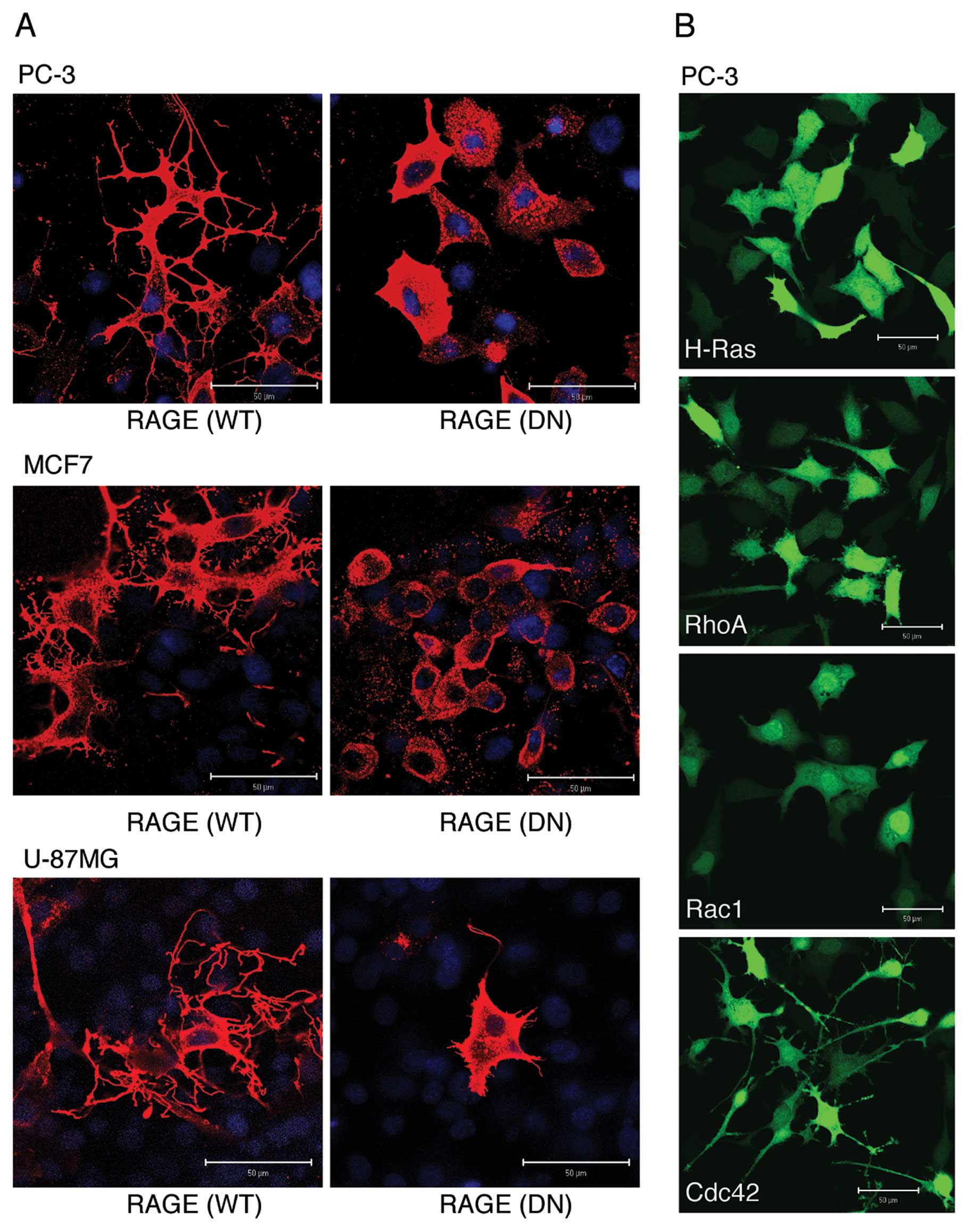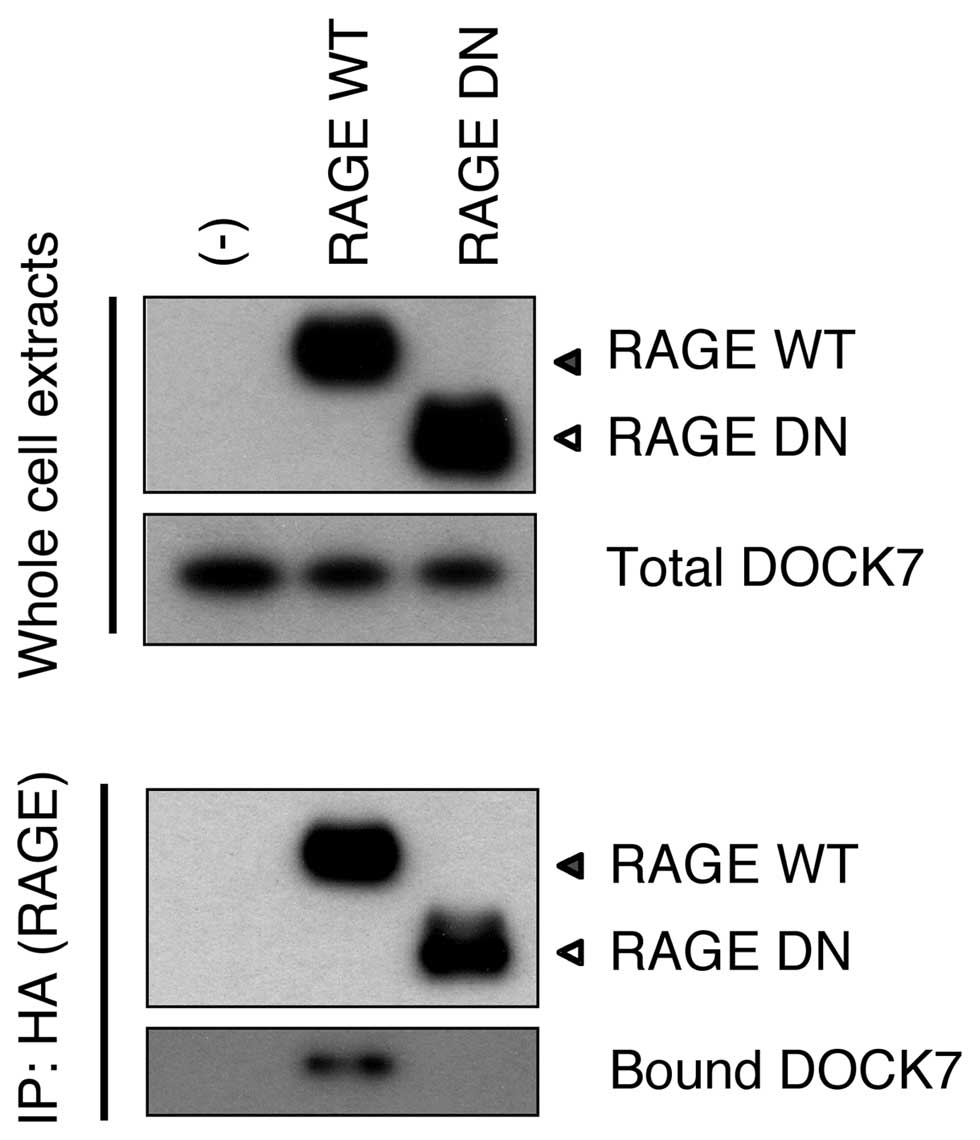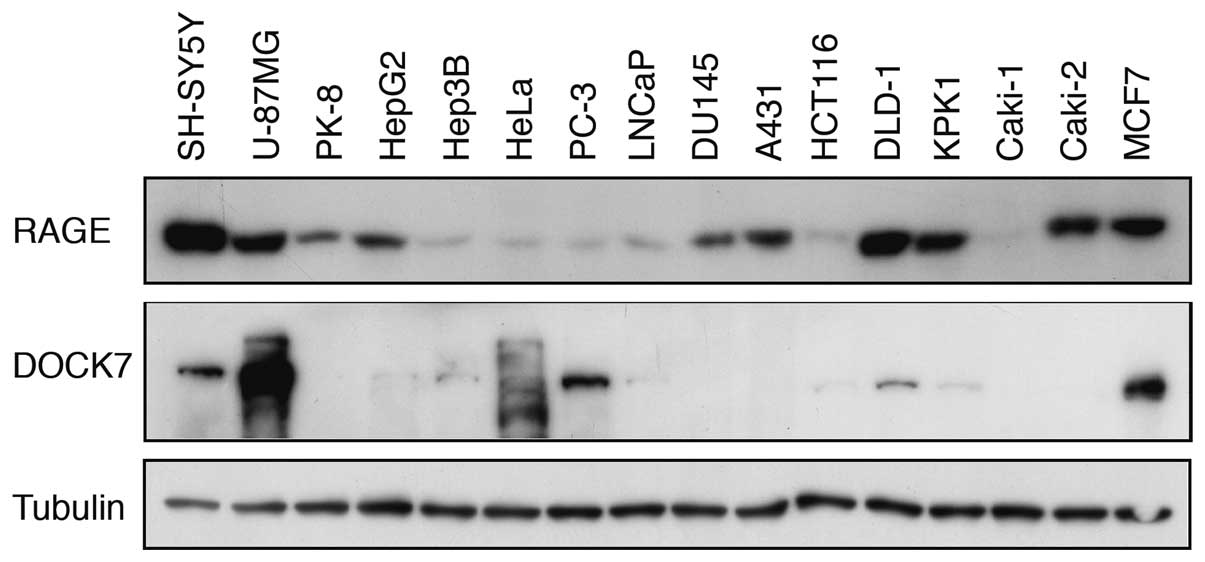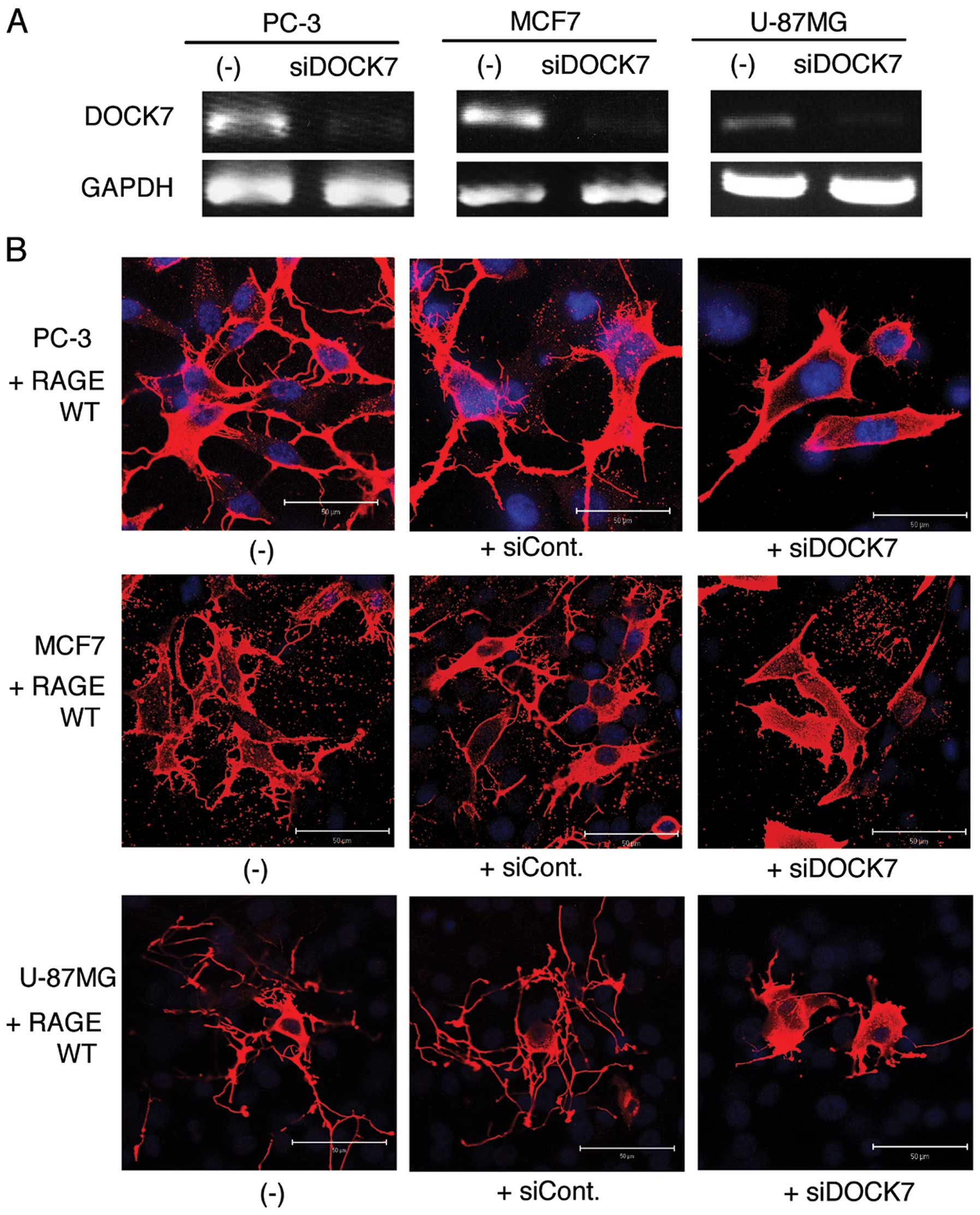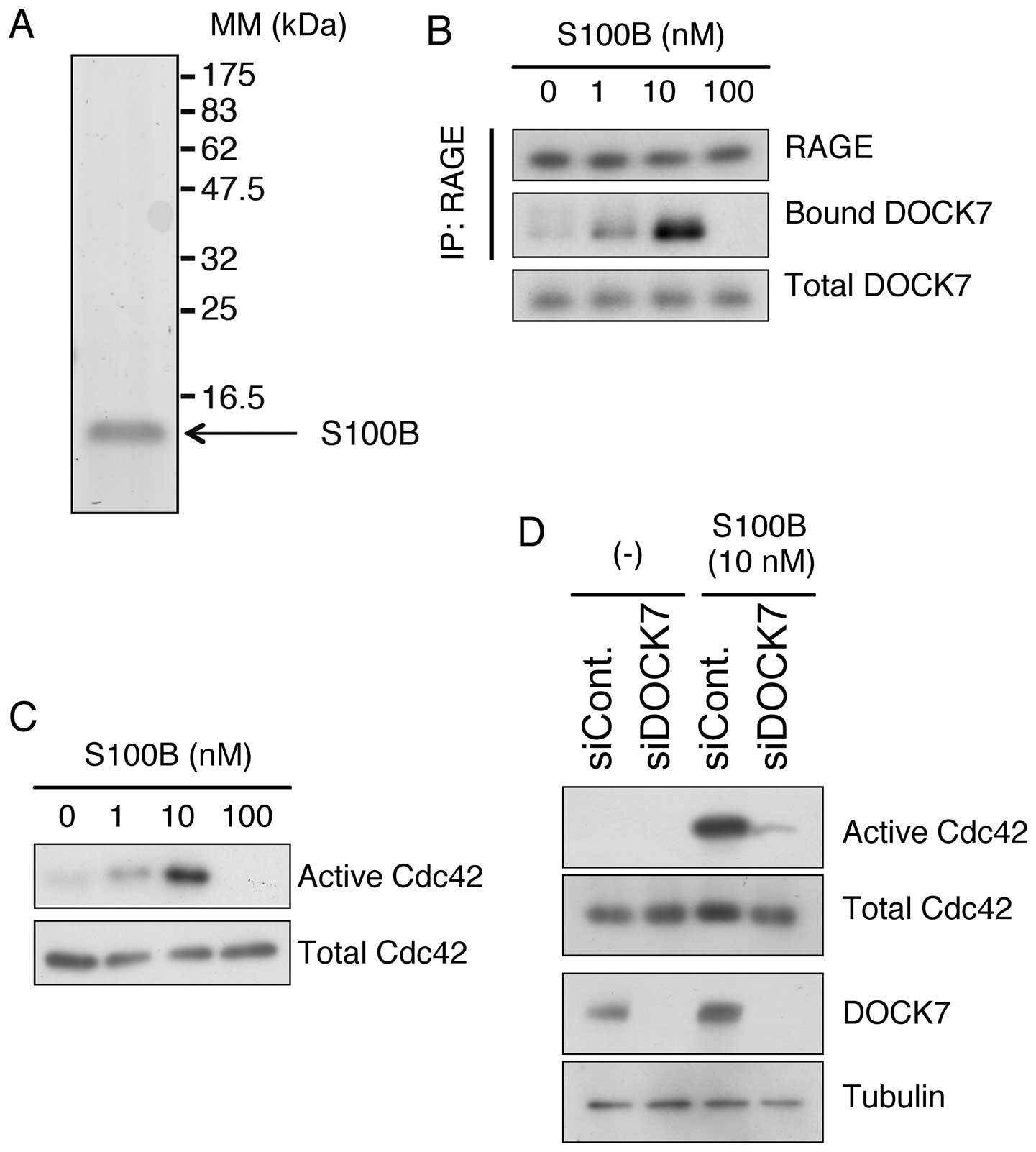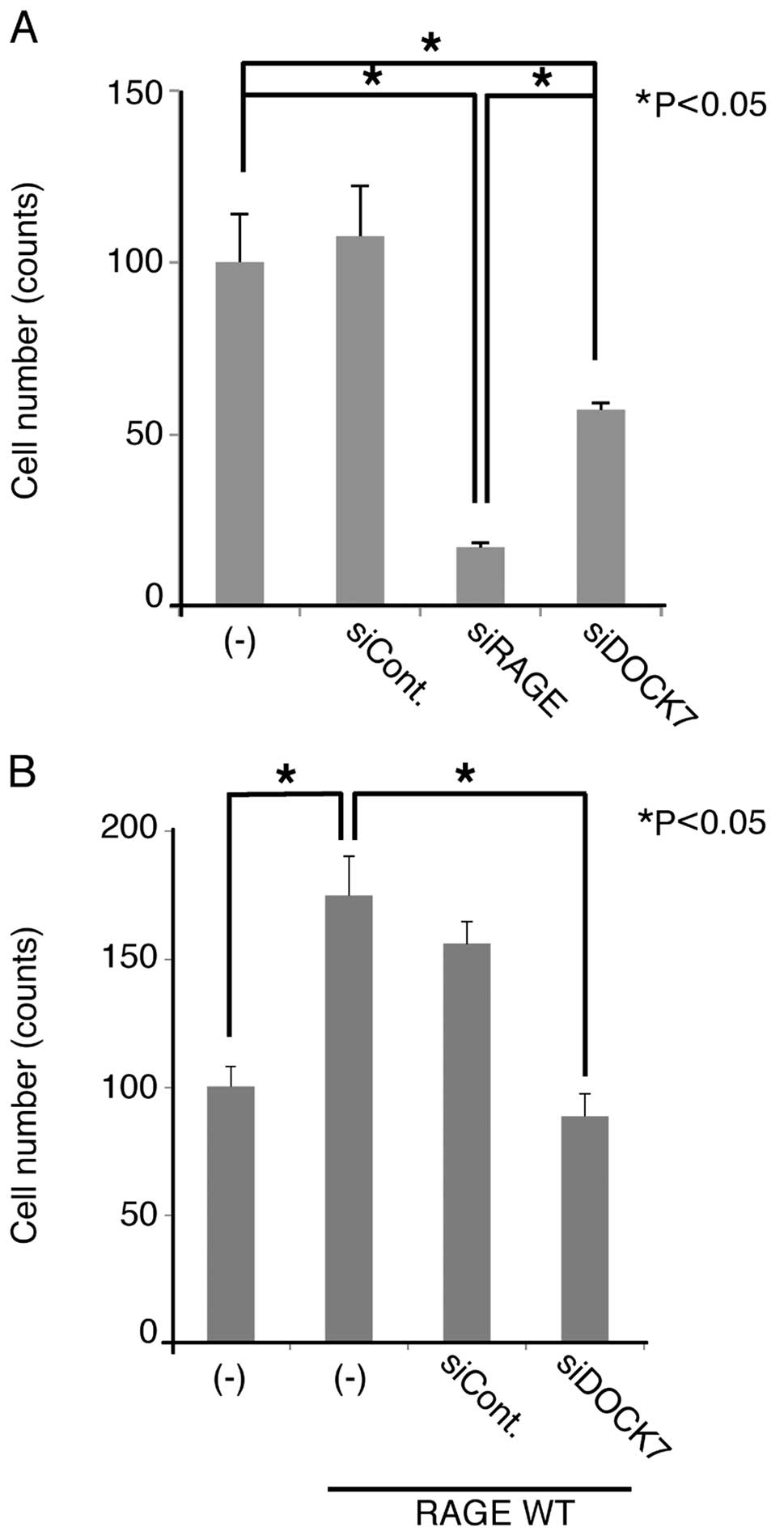|
1
|
Yan SF, Ramasamy R and Schmidt AM:
Mechanisms of disease: advanced glycation end-products and their
receptor in inflammation and diabetes complications. Nat Clin Pract
Endocrinol Metab. 4:285–293. 2008. View Article : Google Scholar : PubMed/NCBI
|
|
2
|
Lin L, Park S and Lakatta EG: RAGE
signaling in inflammation and arterial aging. Front Biosci.
14:1403–1413. 2009. View
Article : Google Scholar : PubMed/NCBI
|
|
3
|
Xue J, Rai V, Singer D, Chabierski S, Xie
J, Reverdatto S, Burz DS, Schmidt AM, Hoffmann R and Shekhtman A:
Advanced glycation end product recognition by the receptor for
AGEs. Structure. 19:722–732. 2011. View Article : Google Scholar : PubMed/NCBI
|
|
4
|
Taguchi A, Blood DC, del Toro G, Canet A,
Lee DC, Qu W, Tanji N, Lu Y, Lalla E, Fu C, Hofmann MA, Kislinger
T, Ingram M, Lu A, Tanaka H, Hori O, Ogawa S, Stern DM and Schmidt
AM: Blockade of RAGE-amphoterin signalling suppresses tumour growth
and metastases. Nature. 405:354–360. 2000. View Article : Google Scholar : PubMed/NCBI
|
|
5
|
Sims GP, Rowe DC, Rietdijk ST, Herbst R
and Coyle AJ: HMGB1 and RAGE in inflammation and cancer. Annu Rev
Immunol. 28:367–388. 2010. View Article : Google Scholar : PubMed/NCBI
|
|
6
|
Leclerc E, Fritz G, Vetter SW and Heizmann
CW: Binding of S100 proteins to RAGE: an update. Biochim Biophys
Acta. 1793:993–1007. 2009. View Article : Google Scholar : PubMed/NCBI
|
|
7
|
Gebhardt C, Riehl A, Durchdewald M, Németh
J, Fürstenberger G, Müller-Decker K, Enk A, Arnold B, Bierhaus A,
Nawroth PP, Hess J and Angel P: RAGE signaling sustains
inflammation and promotes tumor development. J Exp Med.
205:275–285. 2008. View Article : Google Scholar : PubMed/NCBI
|
|
8
|
Hudson BI, Kalea AZ, Del Mar Arriero M,
Harja E, Boulanger E, D’Agati V and Schmidt AM: Interaction of the
RAGE cytoplasmic domain with diaphanous-1 is required for
ligand-stimulated cellular migration through activation of Rac1 and
Cdc42. J Biol Chem. 283:34457–34468. 2008. View Article : Google Scholar : PubMed/NCBI
|
|
9
|
Fukata M, Nakagawa M and Kaibuchi K: Roles
of Rho-family GTPases in cell polarisation and directional
migration. Curr Opin Cell Biol. 15:590–597. 2003. View Article : Google Scholar : PubMed/NCBI
|
|
10
|
Leve F and Morgado-Díaz JA: Rho GTPase
signaling in the development of colorectal cancer. J Cell Biochem.
113:2549–2559. 2012. View Article : Google Scholar : PubMed/NCBI
|
|
11
|
Motoyama A and Yates JR III:
Multidimensional LC separations in shotgun proteomics. Anal Chem.
80:7187–7193. 2008. View Article : Google Scholar : PubMed/NCBI
|
|
12
|
Washburn MP, Wolters D and Yates JR III:
Large-scale analysis of the yeast proteome by multidimensional
protein identification technology. Nat Biotechnol. 19:242–247.
2001. View Article : Google Scholar : PubMed/NCBI
|
|
13
|
Sakaguchi M, Murata H, Yamamoto K, Ono T,
Sakaguchi Y, Motoyama A, Hibino T, Kataoka K and Huh NH: TIRAP, an
adaptor protein for TLR2/4, transduces a signal from RAGE
phosphorylated upon ligand binding. PLoS One. 6:e231322011.
View Article : Google Scholar : PubMed/NCBI
|
|
14
|
Sakaguchi M, Miyazaki M, Takaishi M,
Sakaguchi Y, Makino E, Kataoka N, Yamada H, Namba M and Huh NH:
S100C/A11 is a key mediator of Ca(2+)-induced growth
inhibition of human epidermal keratinocytes. J Cell Biol.
163:825–835. 2003.PubMed/NCBI
|
|
15
|
Huttunen HJ, Fages C and Rauvala H:
Receptor for advanced glycation end products (RAGE)-mediated
neurite outgrowth and activation of NF-kappaB require the
cytoplasmic domain of the receptor but different downstream
signaling pathways. J Biol Chem. 274:19919–19924. 1999. View Article : Google Scholar
|
|
16
|
Wang L, Li S and Jungalwala FB: Receptor
for advanced glycation end products (RAGE) mediates neuronal
differentiation and neurite outgrowth. J Neurosci Res.
86:1254–1266. 2008. View Article : Google Scholar : PubMed/NCBI
|
|
17
|
Davey GE, Murmann P and Heizmann CW:
Intracellular Ca2+ and Zn2+ levels regulate
the alternative cell density-dependent secretion of S100B in human
glioblastoma cells. J Biol Chem. 276:30819–30826. 2011.
|
|
18
|
Miyamoto Y and Yamauchi J: Cellular
signaling of Dock family proteins in neural function. Cell Signal.
22:175–182. 2010. View Article : Google Scholar : PubMed/NCBI
|
|
19
|
Premkumar L, Bobkov AA, Patel M,
Jaroszewski L, Bankston LA, Stec B, Vuori K, Côté JF and Liddington
RC: Structural basis of membrane targeting by the Dock180 family of
Rho family guanine exchange factors (Rho-GEFs). J Biol Chem.
285:13211–13222. 2010. View Article : Google Scholar : PubMed/NCBI
|
|
20
|
Zhelev DV and Alteraifi A: Signaling in
the motility responses of the human neutrophil. Ann Biomed Eng.
30:356–370. 2002. View Article : Google Scholar : PubMed/NCBI
|
|
21
|
Castoldi A, Braga TT, Correa-Costa M,
Aguiar CF, Bassi ÊJ, Correa-Silva R, Elias RM, Salvador F,
Moraes-Vieira PM, Cenedeze MA, Reis MA, Hiyane MI, Pacheco-Silva Á,
Gonçalves GM and Câmara NO: TLR2, TLR4 and the MYD88 signaling
pathway are crucial for neutrophil migration in acute kidney injury
induced by sepsis. PLoS One. 7:e375842012. View Article : Google Scholar : PubMed/NCBI
|
|
22
|
Li CW, Xia W, Huo L, Lim SO, Wu Y, Hsu JL,
Chao CH, Yamaguchi H, Yang NK, Ding Q, Wang Y, Lai YJ, LaBaff AM,
Wu TJ, Lin BR, Yang MH, Hortobagyi GN and Hung MC:
Epithelial-mesenchymal transition induced by TNF-α requires
NF-κB-mediated transcriptional upregulation of Twist1. Cancer Res.
72:1290–1300. 2012.
|















